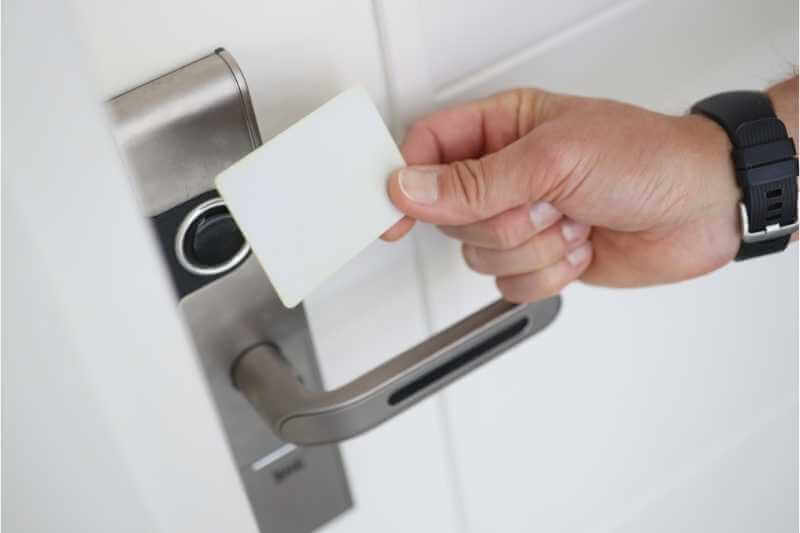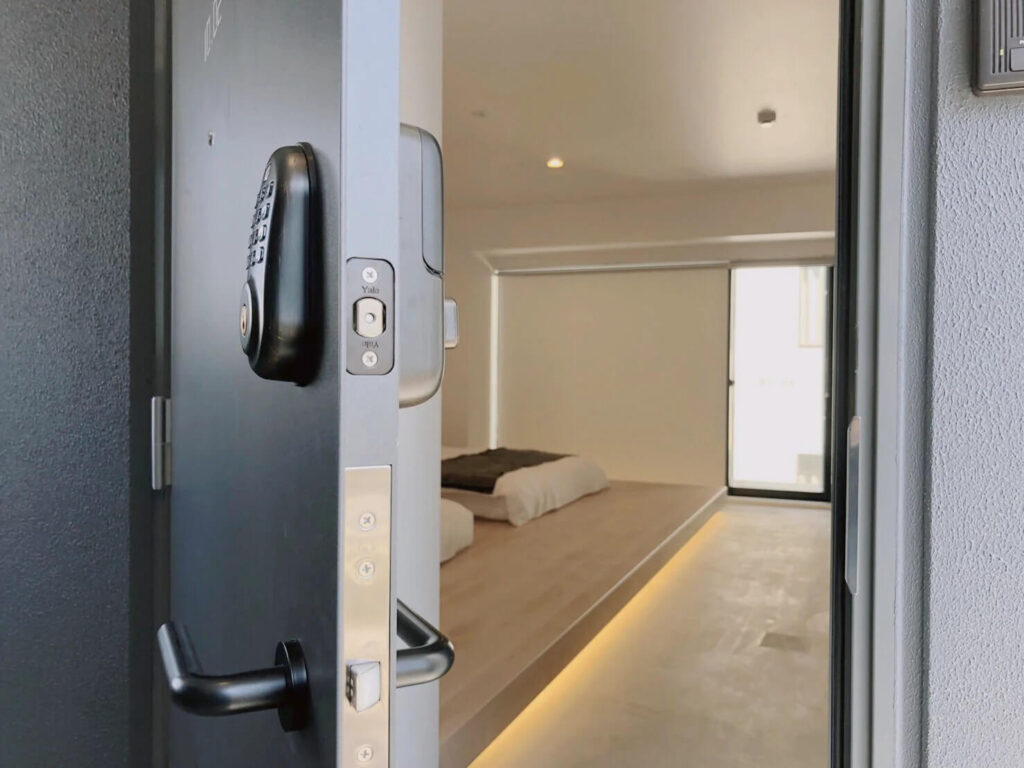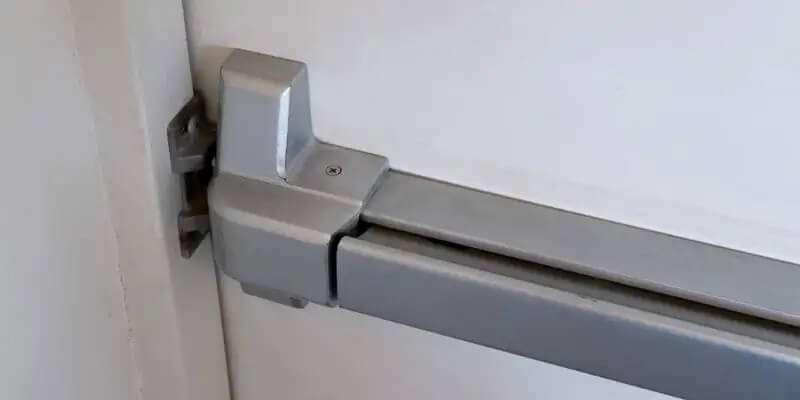The access control system provides authorized personnel with safe access to all parts of your enterprise and keeps unauthorized personnel out. They range from electronic keyboards that protect a door to large-scale networking systems for multiple buildings. Access Systems also greatly simplifies the management of your facilities: there is no need to replace lost keys, look for old keys of former employees, or want to know who has access to which areas.
1. How Will You Use the Access Control System?
First, determine the purpose of the access control system. The most basic function of the access control system is to prevent any unauthorized person from entering an area. This can be the front door, parking lot, server room, personnel file room, or any other sensitive area. You may also want to use the access control system to track when employees enter and leave. Another point to consider: How about the security of your system?
The basic system usually has a keyboard or access card. Applications with higher security may require multiple authentication methods (such as access cards and fingerprints) and include more redundancy. As a final step, consider how your access control system will be connected with other systems. Monitoring alarm systems and closed-circuit television systems are two examples.
The access control system is composed of various components. The locking device is an electromagnetic lock installed on the door frame, the input device is a digital keyboard installed on the outside of the wall (nonsafe) side, the exit device is the “press exit” button located on the inside of the wall (safe) side, and the power supply is the controller, main power supply and battery backup power supply. These four components are connected together to form a circuit.

2. What Size of Access Control System Does Your Enterprise Need?
Next, once you understand the general function of the access control system, please consider the number of doors you need to protect. Usually, access control systems are installed in smaller installations, such as server rooms with electronic keyboard locks. Remember that not every door must have access control; You can simply lock some and only give the key to the appropriate person. If you plan ahead a little when purchasing the system, you will find it quite easy to expand in the future. The scalability of the smallest system designed for one or two doors is not very good, but when you need to expand, you can connect many four-door and eight-door systems together.
- Once you know the number of doors you want to protect, please collect information about each door: the physical structure and use of the door will affect the type of lock and access control system you need. Here are some additional questions to help you conceive.
- Some doors are open to customers, and some are only open to employees.
- Is the door wooden, steel, or aluminum and glass?
- Is there a designated fire door?
- Do you have any garage doors or parking lot doors to control?
Larger installations may include multiple sites. The network-operated access control system enables you to manage the security of all locations from a central point. Controlled exit systems and free exit systems are also key differences between access control systems.
- Free exit system
There is no need to leave the safe area. The system either detects someone approaching the exit (usually through the motion sensor) and unlocks the door, or has a release button or lever that allows people to exit.
- Controlled exit system
The system requires the same security measures for two-way travel: employees must enter passwords or wave their cards to enter and exit the security area. According to the law, the access control system must be set to allow people to exit in case of system failure or power failure. A controlled export system increases safety and overall cost.
3. Design Your Access Control System
When building and designing a secure access control system, multiple components and options need to be considered. However, if you keep five basic elements in mind, the process is quite simple.
1) Entrance
A way to authorize users to identify and/or unlock the door from the security side (in the free exit system).
2) Export
All users can freely export from the inside.
3) Locking Device
A locking device is used to secure the door.
4) System Controller
A controller that manages the interaction between entry devices, exit devices, and locking devices.
5) Function
Consider the specific requirements of the system (audit trail, time-based door or door opening, battery backup).
This is the basic model. For each entry or exit point, ask yourself:
- How will I enter?
- How will I leave?
- What locking device will protect the entry point?
- How will the system be controlled?
- What other functions do I need?
Applying these problems to each entry point is the working principle of the system design process. If you like, please call our toll-free number. Our consultants can design your system and help select components. Most importantly, our project design program is a free service.

4. Access control access equipment: How will I enter?
In all locking systems, security locks need to be released by physical objects (such as independent locks, keys, combinations, or fingerprints) or any or all combinations. Examples include; Proximity reader, key switch, digital keyboard, and biometric reader (fingerprint). These devices are installed on the exterior (fixed side) of the door shell (mullion installation) or the wall near the door (combination installation). An example of input device type is as follows.
As the name implies, the independent (battery-powered) lock is an “integrated” access control system for a single door. Locks powered by replaceable internal batteries can be unlocked by keyboard, inductive card, or combination. The advantage of independent locks is that they can be installed and run in a few minutes. The disadvantage of independent locks is that they are independent rather than part of a wider monitored network. However, some provide handheld readers that can extract audit clues from locks.
1) Independent Lock
A proximity reader is the most popular option in business access control. They are easy to use. When a card is lost, it is easy to deactivate it and issue a new card. They can also be combined with photo ID cards to improve security. The most common is the sensor card, which can work within the range of one inch to three feet from the sensor. Because there is no contact between the card and the card reader, they are very reliable and almost wear-free.
For example, I have a friend who is a climatic chamber manufacturer. Once he invited me to visit his factory. I found out he installed a card reader access control system at the factory gates and gave every employee access cards. He said this not only protects the property of the factory but also makes it easy to know the comings and goings of each employee.
2) Proximity Reader
The key switch provides an electronic audit through the network while continuing to use the physical key to activate the lock.
3) Key Switch
The keyboard is usually used for single-door security access and cheaper systems. They are easy to use but less secure because users tend to write down the input code or “lend” it to others. They will not provide a detailed audit trail until you provide a unique code for everyone.
4) keyboard
The biometric identification system relies on the user’s body characteristics for identity identification, such as fingerprints, fingerprints, and even retina scanning. They are by far the most secure access control methods. However, they are also quite expensive and seem to be an infringement on employees who are forced to use them frequently. It turns out that the early models are not reliable outdoors, so they are not recommended for external security access.
5) Intercom System
The combination of a wireless access control system receiver and transmitter is used for remote door opening.

5. Access control exit equipment: How can I get out?
In order to ensure the free pass of the safety door, all locking systems include a quick exit device. Examples include a one-button exit button, request exit bar, motion detector, emergency (broken glass) exit, and delayed exit. These buttons are installed indoors, on the enclosure around the door (mullion installation), or on the wall near the door (combined installation). Examples of export equipment types are as follows.
The button or one-button exit button, as the name implies, is installed on the wall near the exit point and contains instructions on a large green or red button. Press the button to release the door. The door push rod crosses the inside of the door at the height of the latch. You can exit the door by pressing the railing. Press the lever to release the latch and the door opens. The picture below shows the door push rod.
The emergency exit/emergency release device is attached to the wall near the exit point. There are two general types of emergency exits available. The first is the “broken glass” model. To exit, you need to break the glass surface. This action presses the button in the switch and releases the door. The second type uses the pull-down handle to release the door.
The motion sensor works by detecting vehicles or people approaching the exit and unlocking the door. In addition to motion sensors, several other types of free exit systems are also provided, including loop detectors and photocells or beams
- Motion sensor
Once the device is activated, delay the exit function by starting the timer. The delay exit can include voice commands and the voice explaining that the door will open after “x” seconds. For example, once depression. The delay exit can count down from 15 seconds to zero, and then release the latch to open the door. The delayed exit device provides the emergency opening function of the free exit system and also provides the delay to enhance safety.

6. Access Control Locking Device: How Do I Fix the Door?
In all locking systems, the locking device represents a physical security barrier. Locking equipment includes Maglocks, electric locks, door bolts, magnetic shear locks, and electric locks. These devices are mounted on doors and frames. Examples of locking device types are as follows. “Click” any device photo will open a new window, which can directly access the pricing and product data sheet for further detailed reference.
The magnetic lock electromagnetic lock, magnetic lock, or magnetic lock is a locking device composed of an electromagnet and armature plate. By connecting the electromagnet to the door frame and the armature plate to the door, the current of the electromagnet attracts the armature plate to keep the door closed. Unlike the electric lock, the magnetic lock has no interconnection components, so it is not suitable for ultra-high security applications, because it can be bypassed by interrupting the power supply.
However, today’s magnetic locks are much stronger than traditional locks, and their operating costs are lower than traditional bulbs. The power supply including trickle charging lead acid battery pack shall be used to maintain the safety of short-term power failure. Compared with traditional locks and electric locks, magnetic locks have many advantages. For example, their durability and fast operation make them valuable in high-traffic office environments that require electronic authentication.
The figure above shows the electromagnetic lock/magnetic lock.
- Advantage
Easy to install: Since there are no interconnecting parts, magnetic locks are usually easier to install than other locks.
Fast operation: compared with other locks, the magnetic lock will be unlocked immediately when the power is off so that it can be operated quickly.
Less damage: compared with traditional locks, magnetic locks may suffer less damage from multiple strikes.
- Shortcoming
A continuous power supply is required: to maintain the locked state, the magnetic lock needs a continuous power supply. The power consumption of the lock is usually about 3 watts, which is far lower than the power consumption of the light bulb (about 60 watts or even about 12 watts of LED light bulb), but it may cause security problems because if the power supply is disconnected, the device will be unlocked and disrupted.
In contrast, the electric lock can be designed to remain locked in case of power interruption. However, in terms of fire safety, the requirement of a continuous power supply may actually be preferable.Electric Strike replaces the fixed strike panel that is usually used with the latch bar (also known as the retainer). Like a fixed latch, it usually provides a sloping surface for the locking latch, allowing the door to close and latch like a fixed latch.

However, the electric shock tilting surface can pivot the door latch according to the command to allow the door to be pushed open (from the outside) and the latch will not retract (that is, without any knob operation) or when excited at the same time, the knob or control lever can be turned to allow the exit from the safe area. There are two basic configurations for an electric lock:
Fail-safe is also known as fail-lock or non-fail-safe. In this configuration, applying current to the impulse will turn it on. As a result, the latch remains locked in the event of a power failure, but can still be used on the inside from the safety side to exit the door. These devices can be powered by AC, which will cause the device to emit a “buzz”, or powered by DC power, which will provide silent operation, except for the “click” sound when the device is released.
Fail-safe is also known as fail-open. In this configuration, applying current to the latch will lock it. In this configuration, its operation is the same as the magnetic lock. In case of power failure, just push/pull the door to open it. The fail-safe device always operates on DC power.
Electric door bolts are recommended for high-security indoor doors and cabinets that do not require electromagnetic locks. The electric latch lock includes long-life electromagnetic drive in-line plug-in bolts, some models provide right-angle bolts for narrow frames and stiles and surface-mounted bolt locks for door and cabinet applications. A fail-safe mode is available for electromechanical bolt locks that are compatible with almost all access control systems.
It is recommended to use magnetic shear locks to provide excellent fail-safe retention and aesthetics for most types of doors (including high-profile frameless glass doors). Representing the latest development in the development of magnetic lock, shear lock combines multiple functions to ensure the seamless locking and release of the door without obstruction.
The appearance and function of the electric lock are similar to the typical cylindrical or plug-in mechanical lock. However, the internal solenoid is combined to enable the locking and latch functions. The fire office door, corridor door, hall door, exit door, and staircase door comply with the building and fire life safety code. Both fail-safe and fail-safe provide controlled access and remote control functions, and the door remains locked even when it is unlocked, so as to maintain the integrity of the fire door.

7. Access Control Controller and Software: How Do I Control the System?
Competing access control systems differ greatly in their computer software. The software allows you to set access levels for each ID and door, view reports, and audit to see who used the door at a specific time. Ensure that the software is easy to understand and use: the access control system should reduce the management trouble, rather than introduce new trouble. Ask for a demo of the software to see how easy it is to add new employees, change access levels, create groups, and find detailed reports.
Carefully match the software with your computer’s operating system: Some access control systems are only applicable to specific versions of Windows or other operating systems, so before making a final decision, please know exactly what operating system you are running.
Most of the access control system software is powerful enough to meet the needs of companies with at least 1000 users. When you start to manage multiple shifts, thousands of employees, and hundreds of doors, you will greatly increase the overall complexity. At that level, you may need ODBC-compatible software, which can be connected to your existing payroll, time and attendance systems, and other HR and security systems.
